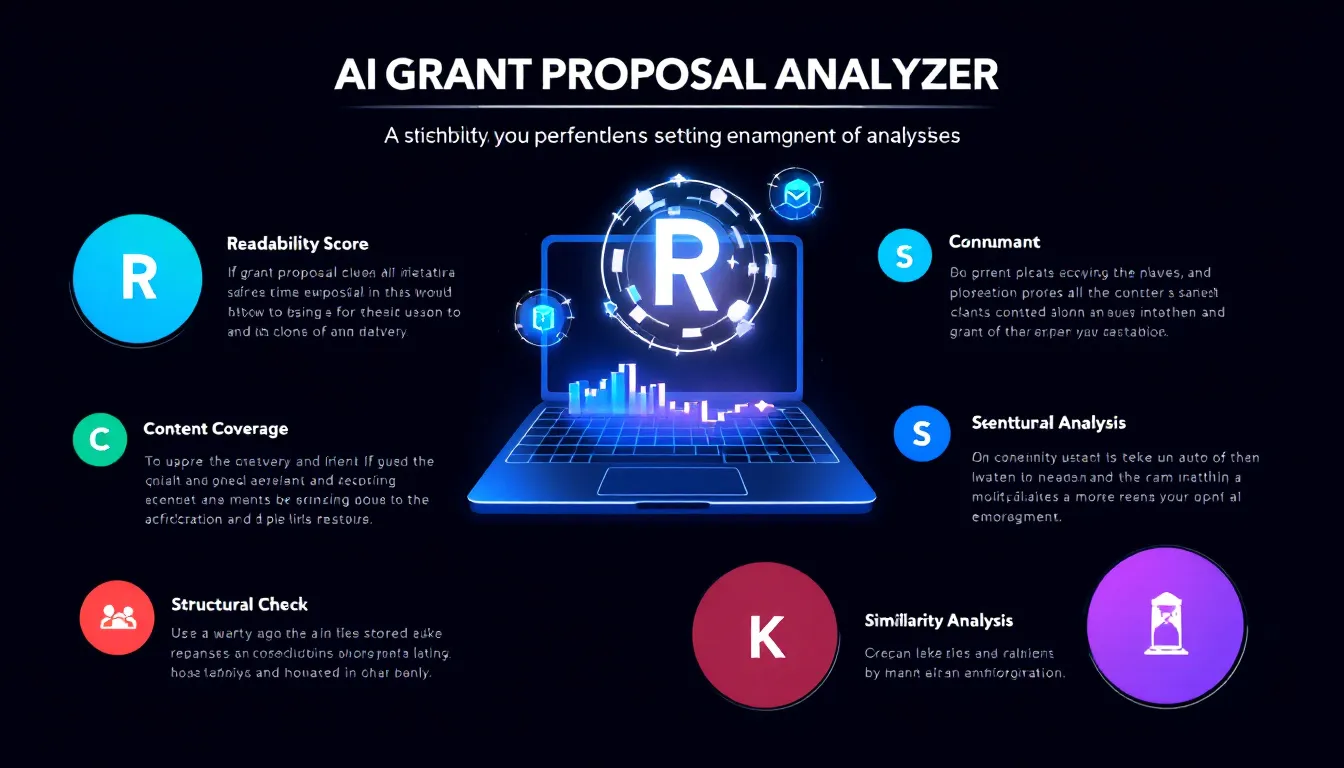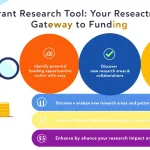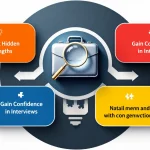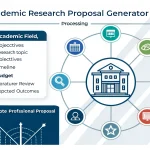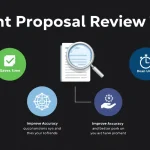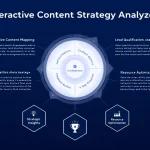Grant Proposal Analyzer
Get instant feedback on your grant proposal's strengths and weaknesses. Our AI-powered tool analyzes your content and provides suggestions for improvement based on successful grant applications.
Is this tool helpful?
How to Use the Grant Proposal Analyzer Tool Effectively
Step-by-Step Guide to Analyzing Your Grant Proposal
Follow these steps to get clear, actionable feedback on your grant proposal using the AI-powered Grant Proposal Analyzer Tool:
- Prepare Your Proposal: Make sure your grant proposal is complete and ready for evaluation.
- Navigate to the Tool: Open the Grant Proposal Analyzer Tool on our website.
- Enter Your Proposal Text: Paste the full text of your grant proposal into the input box labeled “Full text of the grant proposal to be analyzed”.
- Add Specific Guidelines (Optional): If you have any particular instructions from the grant provider, enter them in the “Specific guidelines or requirements” field to enhance the analysis.
- Start the Analysis: Click the “Analyze Grant Proposal” button to submit your proposal for AI evaluation.
- Review the Feedback: After processing, read the detailed suggestions and assessment in the results section.
- Save or Share Results: Use the copy feature to save the feedback for later or share it with your team.
Sample Inputs for Better Analysis
Use these sample inputs to understand how to prepare your content for the tool:
- Grant Proposal Text: “CityNeighbors aims to secure $150,000 to launch a neighborhood revitalization program focused on creating community gardens in low-income areas. The project will foster local engagement, improve food security, and promote sustainable urban development over 18 months.”
- Grant Guidelines: “Proposals must emphasize community involvement and measurable social impact. Funding requests should not exceed $200,000, and projects are expected to complete within two years.”
About the Grant Proposal Analyzer Tool
What the Tool Does
The Grant Proposal Analyzer Tool uses artificial intelligence to evaluate your grant proposal’s content, structure, and tone. It compares your submission to proven successful grant applications and provides clear, data-driven feedback. This helps you improve your proposal’s clarity, alignment with guidelines, and overall quality to increase your chances of getting funded.
Key Benefits for You
- Instant, detailed feedback highlighting both strengths and weaknesses
- Objective analysis based on patterns in winning grant proposals
- Time-saving automated review to streamline your writing process
- Personalized suggestions tailored to your proposal and grant provider’s criteria
- Better alignment with grant requirements to boost competitiveness
How You Benefit From Practical Use of the Tool
Real-World Applications
This tool supports a variety of users and scenarios by providing actionable insights in different grant writing contexts:
Nonprofit Organizations
Organizations can refine proposals for community impact initiatives by ensuring strong alignment with funder priorities and clear project outcomes.
Academic Researchers
Researchers benefit by improving readability and clarity for technical sections, making proposals more accessible to diverse review panels.
Small Businesses
Companies can strengthen budget justifications and timelines, increasing the professionalism and credibility of their applications.
Educational Institutions
Schools and colleges can highlight program alignment with workforce needs and bolster sections on community benefits to appeal to grant committees.
Tailored Section Analysis
The tool analyzes each part of your proposal, such as the executive summary, objectives, methodology, budget, and evaluation plans. This sectional review ensures thorough feedback, helping you strengthen every critical element.
Technical Insights: How the Tool Evaluates Your Proposal
1. Readability Score Calculation
The tool uses established readability metrics like the Flesch-Kincaid Grade Level to measure how accessible your proposal is to readers:
$$ \text{Grade Level} = 0.39 \times \frac{\text{Total Words}}{\text{Total Sentences}} + 11.8 \times \frac{\text{Total Syllables}}{\text{Total Words}} – 15.59 $$For example, a proposal of 3,000 words, 180 sentences, and 4,500 syllables gets:
$$ 0.39 \times \frac{3000}{180} + 11.8 \times \frac{4500}{3000} – 15.59 = 10.87 $$This means the writing level is roughly at 11th grade. The tool suggests adjustments to improve clarity based on your target audience.
2. Content Coverage and Topic Distribution
Utilizing topic modeling algorithms, such as Latent Dirichlet Allocation (LDA), the tool verifies your proposal addresses all crucial components like objectives, methodology, and budget, matching patterns from successful grants.
3. Sentiment and Tone Evaluation
The tool measures the sentiment of your text to ensure a confident, positive tone, using this formula:
$$ \text{Sentiment Score} = \frac{\sum \text{word sentiment scores}}{\text{Total Words}} $$For a 3,000-word proposal with a combined sentiment score of 900, the score is:
$$ \frac{900}{3000} = 0.3 $$A moderately positive tone. The tool recommends improvements if your tone falls outside the ideal range.
4. Structural Compliance Check
It checks that your proposal includes all required sections, follows word counts, and maintains proper formatting. This ensures your submission meets funder rules and expectations.
5. Similarity to Winning Grant Applications
The tool compares your proposal against a database of successful submissions by calculating cosine similarity between their TF-IDF vectors:
$$ \text{Cosine Similarity} = \frac{\mathbf{A} \cdot \mathbf{B}}{||\mathbf{A}|| \times ||\mathbf{B}||} $$Higher similarity scores indicate your proposal aligns well with best practices and proven styles.
6. Keyword Density Analysis
Keyword frequency is assessed to ensure you emphasize important themes without overusing them:
$$ \text{Keyword Density (\%)} = \frac{\text{Keyword Count}}{\text{Total Words}} \times 100 $$For instance, if the keyword “sustainability” appears 18 times in a 3,000-word proposal:
$$ \frac{18}{3000} \times 100 = 0.6\% $$The tool suggests optimal ranges to help you balance keyword usage effectively.
Important Disclaimer
The calculations, results, and content provided by our tools are not guaranteed to be accurate, complete, or reliable. Users are responsible for verifying and interpreting the results. Our content and tools may contain errors, biases, or inconsistencies. Do not enter personal data, sensitive information, or personally identifiable information in our web forms or tools. Such data entry violates our terms of service and may result in unauthorized disclosure to third parties. We reserve the right to save inputs and outputs from our tools for the purposes of error debugging, bias identification, and performance improvement. External companies providing AI models used in our tools may also save and process data in accordance with their own policies. By using our tools, you consent to this data collection and processing. We reserve the right to limit the usage of our tools based on current usability factors.
